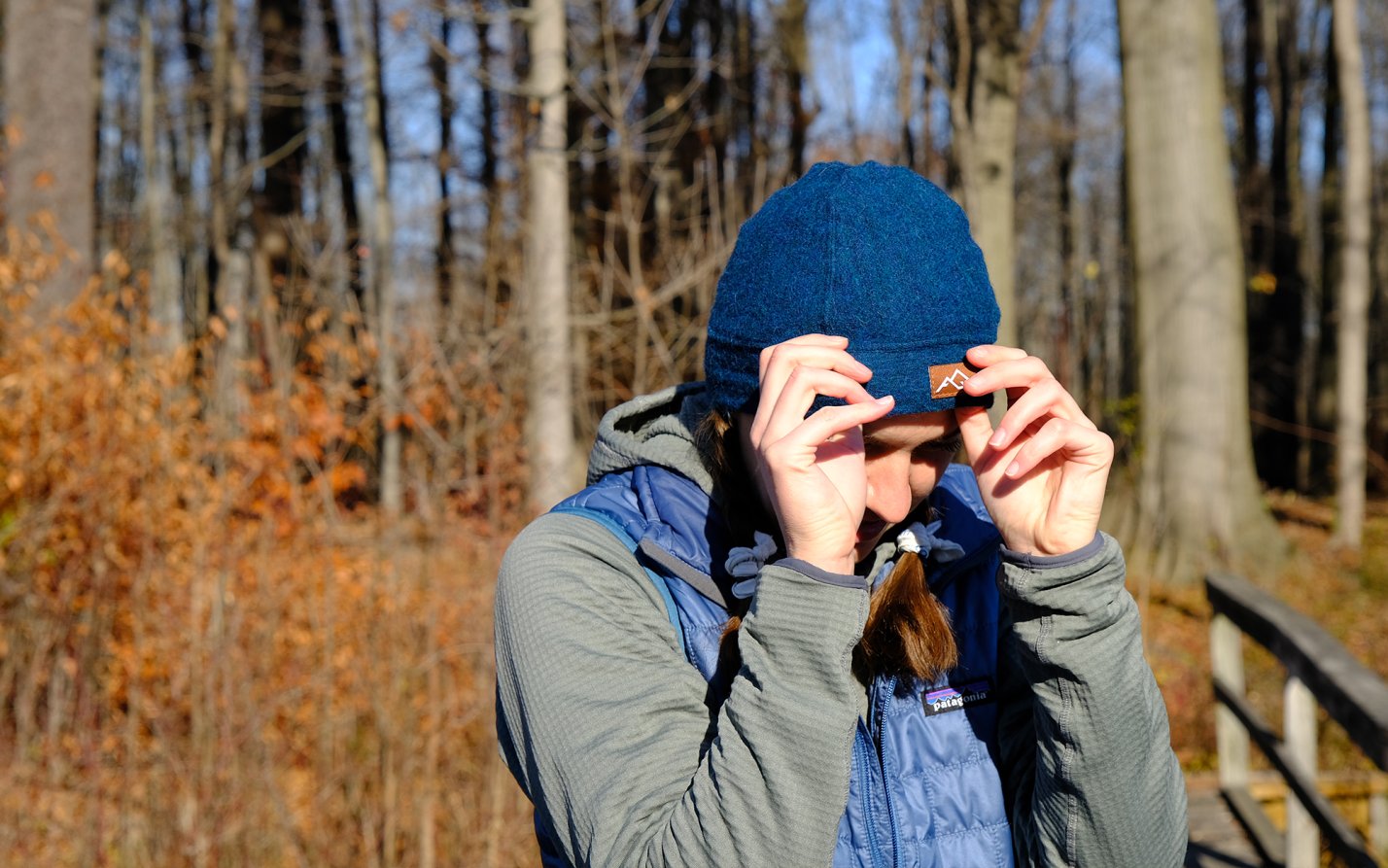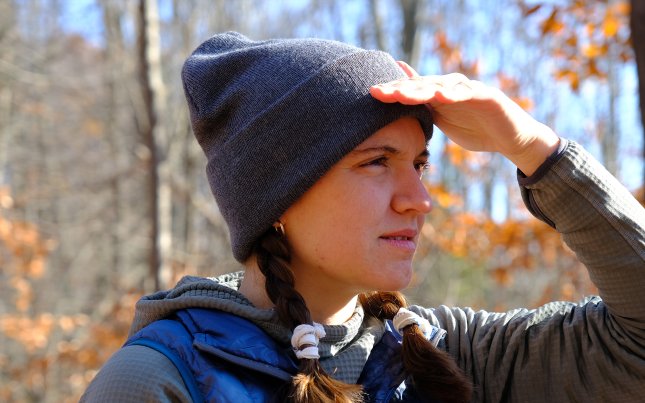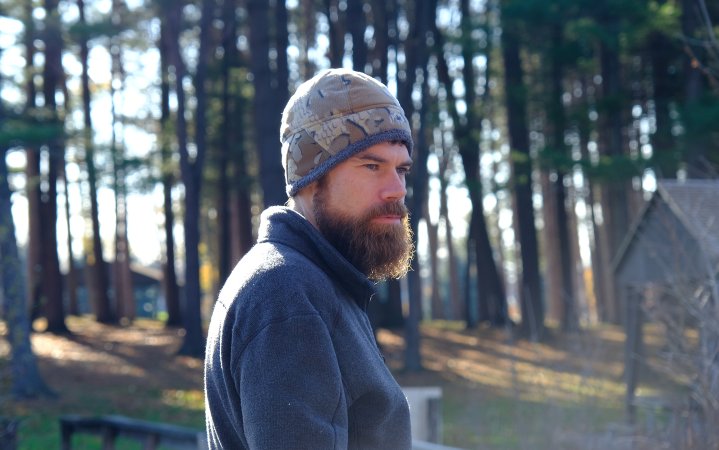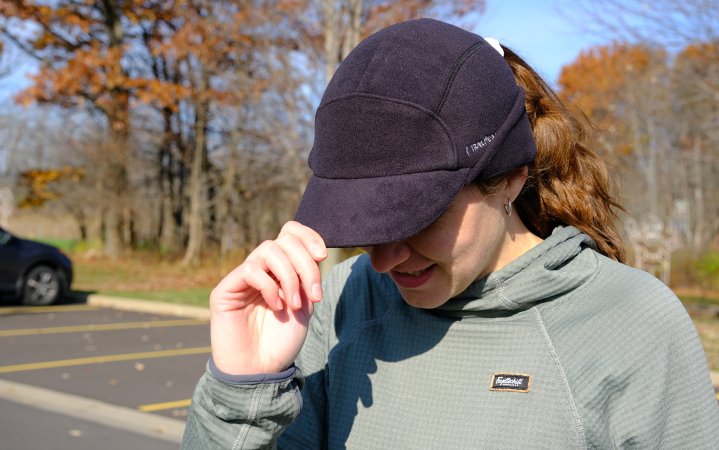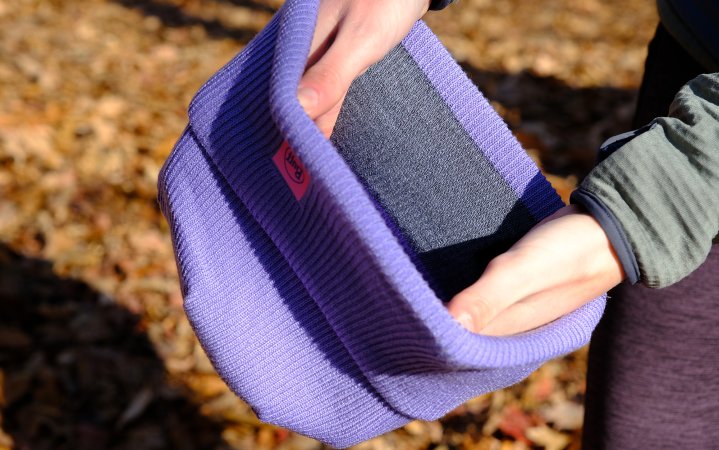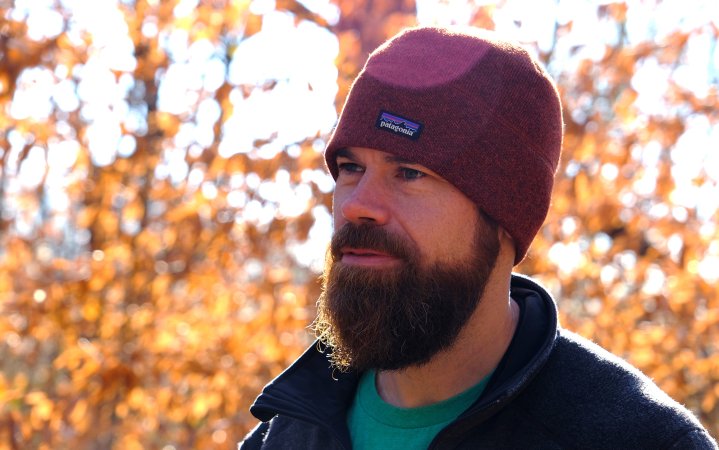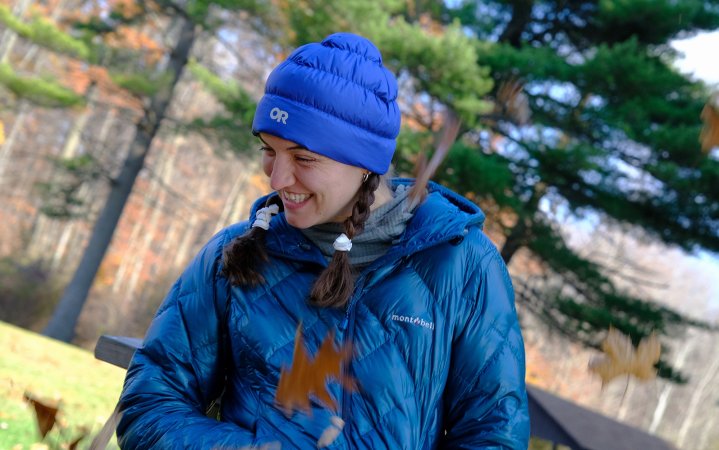We may earn revenue from the products available on this page and participate in affiliate programs. Learn More ›
We’re entering the season when warm performance layers are required for spending time outdoors. And, I’ll shout this from the mountain tops: Winter is best when active! A few years ago I challenged myself to hike at least once a week for an entire year. I went backpacking late into November and spent multiple winter nights in a tent. On my Southbound thru-hike of the Appalachian Trail, I lived in the mountains from early June to mid-November experiencing freezing temperatures. Cold weather introduces new challenges, but they’re worth tackling to stay outdoors all year long.
There’s a thinner line for error, but proper cold weather gear can keep you safe, warm, and active in freezing temps. The best winter hats are crucial for cold environments and act as a four-season emergency layer. Variable conditions and the winter months mean it’s more important than ever to retain body heat to avoid frostbite and hypothermia. To determine what hats will work best for various activities and conditions, I tested a range of innovative winter hats from reputable brands.
- Best Overall: Appalachian Gear Company All-Paca Fleece Beanie
- Best Design: Kuiu Proximity Beanie
- Best for Running: TrailHeads Trailblazer Ponytail Hat
- Best Value: Minus 33 Midweight Everyday Knit Cuff Beanie
- Best for Women: Buff CrossKnit Beanie
- Best Eco-Friendly: Better Sweater Fleece Beanie
- Best Fleece: Kuiu Wind Pro Fleece Beanie
- Best Splurge: Outdoor Research Coldfront Down Beanie
How I Tested the Best Winter Hats

When I chose the best winter hats to test, I looked for options that would be secure, moisture wicking, soft, and properly insulating. Your body will warm up fast while active and then cool down quickly when you start to sweat. I tested the best winter hats while hiking and running in Upstate New York. Then, I asked my fellow long-distance hikers, runners, hunters, and skiers for feedback on design, comfort, and fit. Lastly, I weighed each product and listed my measured weights in the key features, because—surprisingly—they were consistently lighter than the manufacturer’s listed weight.
Best Winter Hats: Reviews & Recommendations
Best Overall: Appalachian Gear Company All-Paca Fleece Beanie
Best Overall
Appalachian Gear Company All-Paca Fleece Beanie
Key Features
- Price: $40
- Weight: 1.06 ounce
- Size: One size fits most (extended sizing is seasonably offered)
- Material: 100 percent alpaca
- Made in the USA
Pros
- Ultralight
- Breathable
- Helmet compatible
- Multiple colors
Cons
- Light to midweight warmth
- Slight prickle factor
While this winter hat doesn’t look substantial at first, the natural insulative properties of alpaca fleece make it fantastic at keeping the chill away. The breathability of the 100 percent Alpaca fiber is why I choose the All-Paca Fleece Beanie time after time. It quickly wicks away sweat and moisture so I can keep it on for an entire long run without feeling overheating or chilled. The bottom cuff gently hugs my head to keep it in place.
My skin can be ultra-sensitive to wool products, and at first, I did experience the slightest bit of irritation to the Alpaca fiber. Alpaca is considered to be hypoallergenic due to the fiber structure and natural lack of lanolin, a fat found in domestic sheep’s wool that some people are sensitive to. My irritation quickly reduced after a few wears.

The All-Paca weighs almost nothing and is ultra-packable. Appalachian Gear Company uses toughened seams and a custom “run” resistant knit structure for long term use and helmet compatibility. This is the hat I’ll be putting in my pack for three-season use, and it’s a great extra layer during snow season. Off the trail it’s been the perfect beanie for autumn running as well as moving between indoor and outdoor settings.
Best Design: Kuiu Proximity Beanie
Best Design
Kuiu Proximity Beanie
Key Features
- Price: $49
- Weight: 2.36 ounces
- Size: M, L, XL
- Material: Mixed polyester
Pros
- Maximum warmth
- Wind and water-resistant
- Quiet
- Anatomical shape
Cons
- Not much stretch
For cold to frigid temperatures, the Proximity Beanie from Kuiu combines premium technology for all-day comfort. A hat that some have commented is too warm, this one is best for relaxing at camp, ice fishing, or perching in a tree-stand during late-season hunts. Kuiu has perfected an anatomical hat shape that allows for coverage of the ears without a tight elastic band or cuff. For a mid-weight option check out their Peloton 240 Beanie. Vision isn’t obstructed to the front and insulated yet breathable polyester panels cover your ears. The rear panel of the hat provides comfortable extended coverage across the neck. The Proximity beanie stays secure as the head and shoulders move freely.
This DWR-treated hat has multi-layer construction for maximum warmth with a brushed face fleece outer, windproof open cell foam mid-layer, water-resistant interior, and a soft Sherpa high-loft fleece lining. This hat is the best defense against harsh weather, but doesn’t offer much stretch. I tested a size medium in Valo, which fit snugly true to size.
Best for Running: TrailHeads Trailblazer Ponytail Hat
Best for Running
TrailHeads Trailblazer Ponytail Hat
Key Features
- Price: $38
- Weight: 2.50 ounces
- Size: One size fits most
- Material: 94 percent polyester and six percent spandex
Pros
- Brimmed
- Reflective details
- Ponytail compatible
- Non-ponytail compatible men’s version
Cons
- Packability
I love winter running in a brimmed hat for protection against sun, snow, and wind. However, I’ve always had to layer multiple hats for the desired brim and insulating outcome. The best thing about this design is the subtle drop-down fleece earflap for extra coverage to the ears and neck. However, It’s easily folded up as body and air temperatures rise. There’s also a hidden inner elastic band to keep the hat in place against big gusts. The ponytail hole is extremely convenient for keeping long hair untangled and away from my face while running. The Trailblazer Hat is also available for men in a slightly larger size with no ponytail hole.
The entire hat surface is covered in a soft, thermal four-way stretch fleece for wind protection with no restriction to hearing. The Trailblazer also features reflective details along the brim and ponytail hole for safety, and a blaze orange color option. I love taking this winter hat hiking, running, and walking around town. This hat can attract particulates like lint or down feathers from a jacket, but they are easily brushed off. The Trailblazer design is also available in merino wool.
Best Value: Minus33 Midweight Everyday Knit Cuff Beanie
Best Value
Minus33 Midweight Everyday Knit Cuff Beanie
Key Features
- Price: $29.99
- Weight: 3.17 ounces
- Size: One size fits most
- Material: 100 percent merino wool
Pros
- Lightweight
- Adjustable cuff
- Breathable
- Oversized fit
Cons
- None
Wow, this is soft! was my first reaction to this cozy, cuffed midweight beanie from Minus33. It’s also been the reaction of other testers. This packable wool hat will easily carry you from the ski slopes to backcountry camping. A Canadian friend, Duckie, recommended this hat after using it for a recent snowy 200-mile thru-hike of the John Muir Trail in the Sierra Nevada Mountains. This double-layered breathable beanie helps to regulate body temperature in cool to cold weather. The benefits of merino wool are numerous including moisture-wicking, anti-microbial, and fire-resistant properties, as well as the ability to provide insulation when wet. This is a mid-weight beanie you can hike in without overheating.
My favorite aspect of this garment is that it’s incredibly spacious due to the stretch of the double-layer knit and adjustable cuff. There is no uncomfortable compression or upward movement compared to the cuffed beanies I’ve purchased before. When uncuffed it’s long enough to cover my whole face, which means it works great as a backcountry sleep mask, too. Due to its relaxed fit, this winter hat is a great option for a range of head shapes. I’ve experienced no irritation from this wool garment. Available in multiple colors including brights and neutrals, this is a cozy performance layer with everyday style.
Best for Women: Buff CrossKnit Beanie
Best for Women
Buff CrossKnit Beanie
Key Features
- Price: $32
- Weight: 3.63 ounces
- Size: One size fits most
- Material: 100 percent acrylic
Pros
- Slim fit
- Midweight warmth
- Reflective logo
Cons
- Attached cuff
- Hand wash only
What I like best about this winter hat is that it stays in place. Overall, The Buff CrossKnit is a standard midweight cuffed beanie. It’s relatively soft, warm, low-profile, and slim-fitting with one important hidden feature: On the inside cuff lies a 100 percent polycolon sweat-resistant band. It wicks moisture away quickly for a dry, breathable feeling. The gray polycolon area is also of a slightly tighter knit, providing a secure fit around the widest portion of the head. I rate this hat best for women solely because of the fit. It works great for folks requiring a smaller hat size.
There’s a reflective element on the lower cuff. I personally enjoyed the iris pop of color. The banded cuff is attached to the main body of the hat in two locations. This was annoying at first. However, after continued use I determined that the attached cuff places the Polycon band exactly where it serves best and there’s still plenty of depth for full ear coverage. If I were to nit-pick one thing it would be that it’s advertised as easy to care for; so one might be surprised that this synthetic material is recommended to be hand washed.
Best Eco-Friendly: Better Sweater Fleece Beanie
Best Eco-Friendly
Better Sweater Fleece Beanie
Key Features
- Price: $49
- Weight: 1.98 ounces
- Size: S/M, L/XL
- Material: 100 percent recycled polyester
Pros
- Low profile
- Warm
- Wind resistant
- Lightweight
Cons
- Sizing runs big
- Little stretch
The Better Sweater fleece beanie is a warm hat featuring a low profile and relaxed fit. My partner Tom picked this cap up at the end of last winter to replace a beloved older hiking hat. It’s a lightweight backpacking hat that he wears around camp, to sleep, and for the first few chilly early morning miles. So far, it’s gotten his approval on a few short backpacking trips.
The recycled fiber content and apparent durability are why I awarded it the best eco-friendly winter hat. It’s constructed of 100 percent recycled polyester fleece, and dyed in a variety of soothing colors using a low-impact process. This beanie is lightweight compared to its dense knit. The thick exterior provides natural wind resistance as well as abrasion durability. A fully sewn double cuff and soft-touch inner fleece provide extra warmth. It sits secure on the head for full ear coverage with no elastic banding. This uncuffed beanie runs big with very little stretch.
Best Fleece: Kuiu Wind Pro Fleece Beanie
Best Fleece
Kuiu Wind Pro Fleece Beanie
Key Features
- Price: $39
- Weight: 1.87 ounces
- Size: M, L, XL
- Material: 100 percent Polyester
Pros
- Anatomical shape
- Wind and water resistant
- Lightweight
Cons
- Runs big
The Kuiu Wind Pro fleece beanie is a flexible cap for cold conditions. Constructed of 100 percent Polartec Wind Pro polyester fleece, the tighter knit of the fleece provides high-level wind protection without a noisy membrane. I can confirm that this fleece is stark quiet with no restriction to hearing. Water repellency on the outer surface beads water off for a quick dry.
The anatomical shape combines a paneled top, excellent full-length ear protection, and extended coverage across the neck. I tested a size medium which is definitely comfortable, if a bit loose around the ears. But other testers confirmed this is a great option for larger heads. This hat layers great under helmets and hard hats. With a variety of camouflage patterns and two neutral colors (black and ash at the time of publishing), my only critique is the lack of blaze orange for safe visibility.
Read Next: Best Base Layers for Hunting
Best Splurge: Outdoor Research Coldfront Down Beanie
Best Splurge
Outdoor Research Coldfront Down Beanie
Key Features
- Price: $48
- Weight: 1.09 ounces
- Size: S/M, L/XL
- Material: 30D polyester ripstop shell with 650 fp responsibly sourced down
Pros
- Very warm
- Wind resistant
- Lightweight
- Reflective logo
Cons
- Low profile
- Runs small
This hat is a splurge in price and function. It’s not the most expensive winter hat on the market or included in this gear round-up. However, I’m a person with a focus on multi-purpose functionality. And this hat is best used as part of a sleep system or during low-intensity activity in the most frigid conditions because the ripstop and down materials do not absorb moisture well.
The Coldfront Down Beanie is an ultralight winter hat with four stitched baffles to provide stretch and hold it securely on the head. It compresses into nothing when placed into a pocket or pack. I’ve been extremely surprised at the warmth when relaxing at camp or on chilly mornings. This hat does run small. I tested a S/M and would size up for better comfort and ear coverage. Because your ears are completely covered with polyester ripstop so you can hear the noise of the fabric. I found this worked best when paired with a thin liner hat or headband.
Things to Consider Before Buying a Winter Hat
I’ve accumulated a vast collection of winter hats that work well, but aren’t always perfect. Finding the perfect fit for my head has always been an issue. Cold weather beanies always seem to creep upwards. Double-layer, single-layer, cuffed, it doesn’t seem to make a difference. Too many nights have been spent fidgeting in my sleeping bag to keep a hat in place much to the annoyance of myself and my tentmate.
Comfort, however, is always going to be user-dependent. Will it be safe in harsh weather? What are the activity demands? Can it be layered? Is the material irritating? Just as one-size-fits-all doesn’t always work, there isn’t a one-hat-fits-all solution.
Size
There’s a bit of gambling in buying a hat without trying it on first. We are dealing with miniscule variables for getting the fit just perfect. When shopping online I’d look for retailers that provide sizing charts, size exchanges, returns, and verified customer feedback. I found that most of the hats tested ran generally true to size. Local retailers are a great resource to determine the appropriate depth, expected warmth, and ear coverage of particular designs.
Warmth
Unlike the published R-value of sleeping pads, there is no published standard to easily determine the warmth of a hat. It’s recommended to wear several mid- to lightweight layers that can be easily removed to avoid excessive perspiration in cold temperatures. Dry layers are always optimal for heat retention. Keep these categories in mind when looking into winter hats:
Lightweight warmth single-layer hats, sometimes referred to as liner hats, are thin layers of insulation for minimal protection. They excel for short durations of intense activity in moderate to cool weather. Many winter season hikers will wear a midweight hat over a liner hat, with a plan to shed layers as temperatures increase.

Mid-weight warmth hats should be versatile in function. A mid-weight winter hat will cover most of your cold season requirements while being ultra-packable, stylish, and often in a range of fun colors. The material should be breathable but not so much that heat retention is compromised by wind.
Maximum warmth hats will prioritize heat retention. As breathability is decreased these accessories are best used during low-intensity activity, or when working against cold to frigid temperatures. Alpine skiers, late-season hunters, bikers, and climbers might find the extra insulation necessary to maintain a safe body temperature.
Care
For an item you’ll be sweating in, it’s best when proper care is easy. Machine wash is obviously the easiest, especially when stopping through towns on a thru-hike, or after a long day on the slopes. The effects of aggressive agitation on the lifespan of a garment should be considered. Performance products typically don’t take long at all to dry. And wool will typically be odor-resistant and anti-bacterial meaning it doesn’t need to be cleaned as often. Depending on manufacturer recommendations, wool products on the market today can be machine-washed for serious grime and some synthetics might require hand washing.
Wool or Synthetic
Both wool and synthetic are good options. Keep in mind that there are hundreds of wool varieties, including merino wool and alpaca fiber. Wool is lightweight, breathable, insulating when wet, fire resistant, and pulls moisture away from the body. These materials do not easily retain odors or support bacterial growth. Both merino wool and alpaca items should be properly stored to avoid moth damage, or for extended treks, can be treated with permethrin for moth prevention. But, some wool products can be itchy or irritate the skin depending on the manufacturing process.
Synthetic hats can be slightly more durable and wind-resistant due to the high-density weave of fibers, and not as stretchy as other materials. I found that the synthetic hats easily beaded off water droplets and dried out quickly, but were not as insulating once drenched. As a runner, hiker, and backpacker I’ve used both wool and synthetic hats. While on the move I lean towards a wool hat for breathable warmth, and prefer the insulating properties of synthetic while at camp.

Visibility
A pop of color equals visibility. Visibility outdoors is good. The use of a blaze orange hat is highly recommended for anyone spending time outdoors in hunting season, which changes depending on your location. If you’re traveling, be sure to check. Bright colors also help to locate a person in extreme survival situations, aid in low-light, and are generally easier to locate in a dim tent. Reflective details can provide extra visibility in low light situations in the woods or along roadways. For driver and pedestrian safety, reflective or light-up enhanced visibility accessories are crucial for running or walking along dark roadways.
Read next: The 10 Best Winter Survival Tips
FAQs
Wearing a hat can reduce heat loss from other parts of your body. A 2008 study shows that adults lose close to 10 percent of body heat through the top of the head. While this a reduced percentage from the 40 to percent myth, the loss of heat is essentially proportional to exposed skin. With a hat you might not have to layer up as much below the neck. For thru-hikers that means carrying a hat is actually ultralight.
Wool hats are a popular choice for cold weather. The natural structure of wool effectively traps tiny air pockets around and within individual fibers for top-tier insulation. For best performance, choose a hat thickness to match the intended use. Knit wool hats can provide great heat retention, and through the fairly open structure, do not feel as hot as other options.
While there is no best material, I would avoid cotton hats for cold-weather activity. Cotton performs best when dry. When moisture is introduced, individual cotton fibers and the space around them get fully saturated. Cotton does not wring out well and takes longer to dry compared to other performance fabrics. Cold fabrics pull warm air (heat) away from the body instead of trapping it, leading to an increased risk of hypothermia.
Final Thoughts on the Best Winter Hats
Overall, safety and comfort are most important when considering the best hats. Find a winter hat that’s comfortable and matches your personal style, because you’ll be more likely to wear it. Cuffed hats have always been my top choice for adjustable warmth; however, some of my favorite hats in this review were single-layer beanies. As someone who’s outside year-round, I’ll be maintaining multiple hats in rotation to keep my head toasty warm and avoid the life-threatening effects of cold exposure.
- Best Overall: Appalachian Gear Company All-Paca Fleece Beanie
- Best Design: Kuiu Proximity Beanie
- Best for Running: TrailHeads Trailblazer Ponytail Hat
- Best Value: Minus 33 Midweight Everyday Knit Cuff Beanie
- Best for Women: Buff CrossKnit Beanie
- Best Eco-Friendly: Better Sweater Fleece Beanie
- Best Fleece: Kuiu Wind Pro Fleece Beanie
- Best Splurge: Outdoor Research Coldfront Down Beanie
